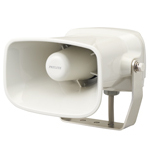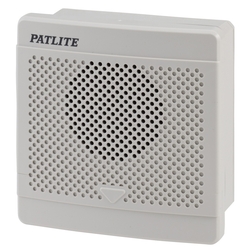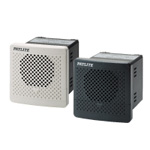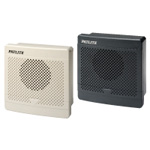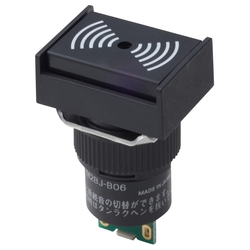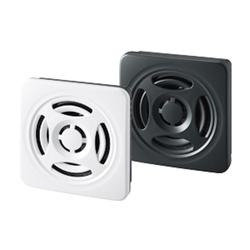Alarms/Buzzers(Protection function (IP/drip-proof, etc.):Available)
| Shipping Days |
|
|---|
?* Information on days to ship and prices
-
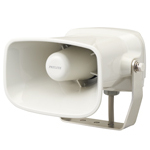
EHS / EHV series
PATLITE
Delivers a maximum volume of 110dB (at 1 m)—the highest level in the industry. An industry first. Features two unique sound characteristics for use in different applications.
[Features]
· The M3 specification, if mounted with vibration-proof rubber, achieves 7 G vibration resistance, and so can clear the vibration test standards for automobile parts (JIS D 1601-1995 class 3 class B).
· Four different operational modes can be selected (EHS types are hold and playback only).
· A maximum playback time of 220 s (EHV type).
· The noise reduction function can be set to a volume level commensurate with the ambient environment.
· Two wiring types are available; a cabtyre specification and a terminal block specification.
· The one unit is compatible with both NPN and PNP transistor outputs (M1 specifications).
· Features 63 built-in alarms and melodies (32 with the EHS type).
· Sharing MP3 data improves expressiveness.(EHVtype).
· Compatible with Playlist Editor2.
· · UL Listed (file no. S24210) (except M3 specification).- Volume Discount
Configure nowStarting from∗ : 234.68 € Min. Shipping Days : 5 Days *Unit price with basic configuration
-
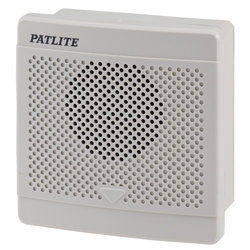
Electronic Audio Alarm BK
PATLITE
The BK1 unit features 32 built-in tones. An embedded type with clear audio quality.
[Features]
· Easy to operate using the switch volume card slots on the front side.
· The volume can be adjusted on the front surface of the main body.
· Installing the switches, which were hitherto on the back of the main body, on the front panel enables operations from the installation side, improving operability.
· A dedicated embedded type.
· An IP54 structure (only on front with front-facing panel mounted).
· Produces a high volume sound of 95dB (at1m) despite its relatively compact size.
· Furthermore, the volume can be adjusted using the knob on the front of the main body.
· Features compatibility with NPN transistor open collectors, enabling direct drive with a PLC etc.
· Compliant with CE standards.
· Compliant with international standards, allowing it to be used globally (24V specifications).
· A two-color front panel is available for use with embedded equipment.
· The tone group selection switch allows for switching between the 32 available sounds as needed.
· Settings A to H and the bit input method enable playback of eight different tones.
· Settings I to O enable test sound (ambulance siren) playback.
· Can be used to check operations and adjust the volume.
· The P setting and the binary input method enable 32-tone playback.
· Tone combinations can be changed as needed with the SD card- Volume Discount
- 2D CAD data available
Configure nowStarting from∗ : 205.74 € Min. Shipping Days : 23 Days *Unit price with basic configuration
-
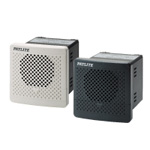
MP3 Synthetic Audio Alarm for Panels BDV
PATLITE
A high-quality synthetic audio alarm that uses MP3 format audio. Produces a high volume of 87dB (at 1 m) despite its small size.
[Features]
· The volume can be adjusted on the front surface of the main body.
· Installing the switches, which were hitherto on the back of the main body, on the front panel enables operations from the installation side, improving operability.
· A dedicated embedded type.
· Can output a maximum volume of 87dB (at 1 m) despite its compact size.
· The volume can be adjusted using the knob on the front of the main body.
· The various playback modes enable settings suited to different applications.
· Compatible with NPN transistor open collectors.
· A two-color front panel is available for use with embedded equipment.
· An IP54 protection grade structure (front with forward mounting only).
· The messages are free if specifying 3,000 or more standard message types.
· The messages can be changed while installed using an SD card.- Volume Discount
- 2D CAD data available
Configure nowStarting from∗ : 304.95 € Min. Shipping Days : 23 Days *Unit price with basic configuration
-
Configure now
Starting from∗ : 398.05 € Min. Shipping Days : 23 Days *Unit price with basic configuration
-
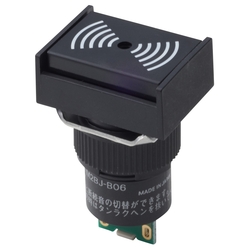
Buzzer (Round Body Type ø16) M2BJ
OMRON
[Features]
· A round body type with a length of 22 mm. Part of the ø16 series.
· Available as a standard volume type (fixed 80 horns) or as a high volume type (variable 70 to 95 horns). Can produce both intermittent and continuous sound output.- Volume Discount
Configure nowStarting from∗ : 33.05 € Min. Shipping Days : Same day *Unit price with basic configuration
-
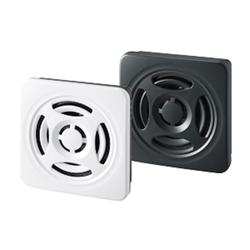
Thin-Type MP3 Playback Alarm Device BSV
PATLITE
A thin-type design which helps contribute to space saving measures for equipment.
Features 15 built-in standard alarms (note that changing the sound generator will delete the built-in sounds.)
[Features]
· Mounts easily from the front.
· A thin-type compact design with a width of just 19.9 mm.
· Can be both panel mounted and wall mounted.
· Despite being thin, it can still produce a volume of up to 87dB (at 1 m).
· The volume can be adjusted using the knob on the front of the main body.
· The various playback modes enable settings suited to different applications.
· Signal inputs can be used to reduce the volume (when using the volume reduction function, the number of playback messages is limited).
· Compatible with open collector transistors.- Volume Discount
Configure nowStarting from∗ : 116.98 € Min. Shipping Days : 5 Days *Unit price with basic configuration
| Brand |
|---|
| Product Series |
| CAD |
| Starting from∗ |
| Min. Shipping Days |
| Shape |
| Product Type |
| Sound |
| Types of sound |
| Volume(dB) |
| Volume adjustment |
| Protection function (IP/drip-proof, etc.) |
| Rated Voltage(V) |
| Terminal shape |
| Representative Standard |
| Dimension length(mm) |
| Dimension width(mm) |
| Dimension thickness(mm) |
| Brand | PATLITE | PATLITE | PATLITE | PATLITE | OMRON | PATLITE |
|---|---|---|---|---|---|---|
| Product Series | ||||||
| CAD |
|
|
| |||
| Starting from∗ | 234.68 € *Unit price with basic configuration Volume Discount | 205.74 € *Unit price with basic configuration Volume Discount | 304.95 € *Unit price with basic configuration Volume Discount | 398.05 € *Unit price with basic configuration Volume Discount | 33.05 € *Unit price with basic configuration Volume Discount | 116.98 € *Unit price with basic configuration Volume Discount |
| Min. Shipping Days | 5 Days | 23 Days | 23 Days | 23 Days | Same day | 5 Days |
| Shape | Other | Square shape | Square shape | Square shape | Silique type | Square shape |
| Product Type | - | - | - | - | - | - |
| Sound | Continuous / Intermittent | Continuous | Continuous / Intermittent | Continuous / Intermittent | Continuous / Intermittent | Continuous / Intermittent |
| Types of sound | Voice/music / Other | Voice/music | Voice/music / Other | Voice/music / Other | Peak / Boost | Voice/music / Other |
| Volume(dB) | 110 | 95 | 87 | 95 | 70–95 ~ 80 | 87 |
| Volume adjustment | Available | Available | Available | Available | Available / N/A | Available |
| Protection function (IP/drip-proof, etc.) | Available | Available | Available | Available | Available | Available |
| Rated Voltage(V) | Other | 100 V AC / Other | Other | 100 V AC / Other | Other | Other |
| Terminal shape | - | - | - | - | Solder terminal | - |
| Representative Standard | CE / UL | CE | CE | - | - | CE / UL |
| Dimension length(mm) | 149.5 | 120 | 80 | 120 | 18 ~ 20 | 75 |
| Dimension width(mm) | 166.5 | 120 | 80 | 120 | 24 ~ 26 | 75 |
| Dimension thickness(mm) | 198.2 | 62.8 | 94.7 | 62.8 | 28.5 | 19.9 |
Loading...
Filter by:
Stock
-
- Show only stock items
-
Shape
-
Product Type
- Alarm / Buzzer Unit
- Other
-
Sound
- Continuous
- Intermittent
-
Types of sound
- Peak
- Boost
- Voice/music
- Other
-
Volume(dB)
-
Volume adjustment
- Available
- N/A
-
Protection function (IP/drip-proof, etc.)
-
Rated Voltage(V)
- 24 V DC
- 100 V AC
- Other
-
Terminal shape
- Solder terminal
- Screw terminal
- Other
-
Representative Standard
-
Dimension length(mm)
-
Dimension width(mm)
-
Dimension thickness(mm)
Brand
-
- PATLITE (5)
- OMRON (1)
- WERMA (0)
- RAFI (0)
- DECA (0)
- PHOENIX CONTACT (0)
- EATON (0)
- SIEMENS (0)
- SCHLEGEL (0)
CAD data type
-
- 2D
- 3D






